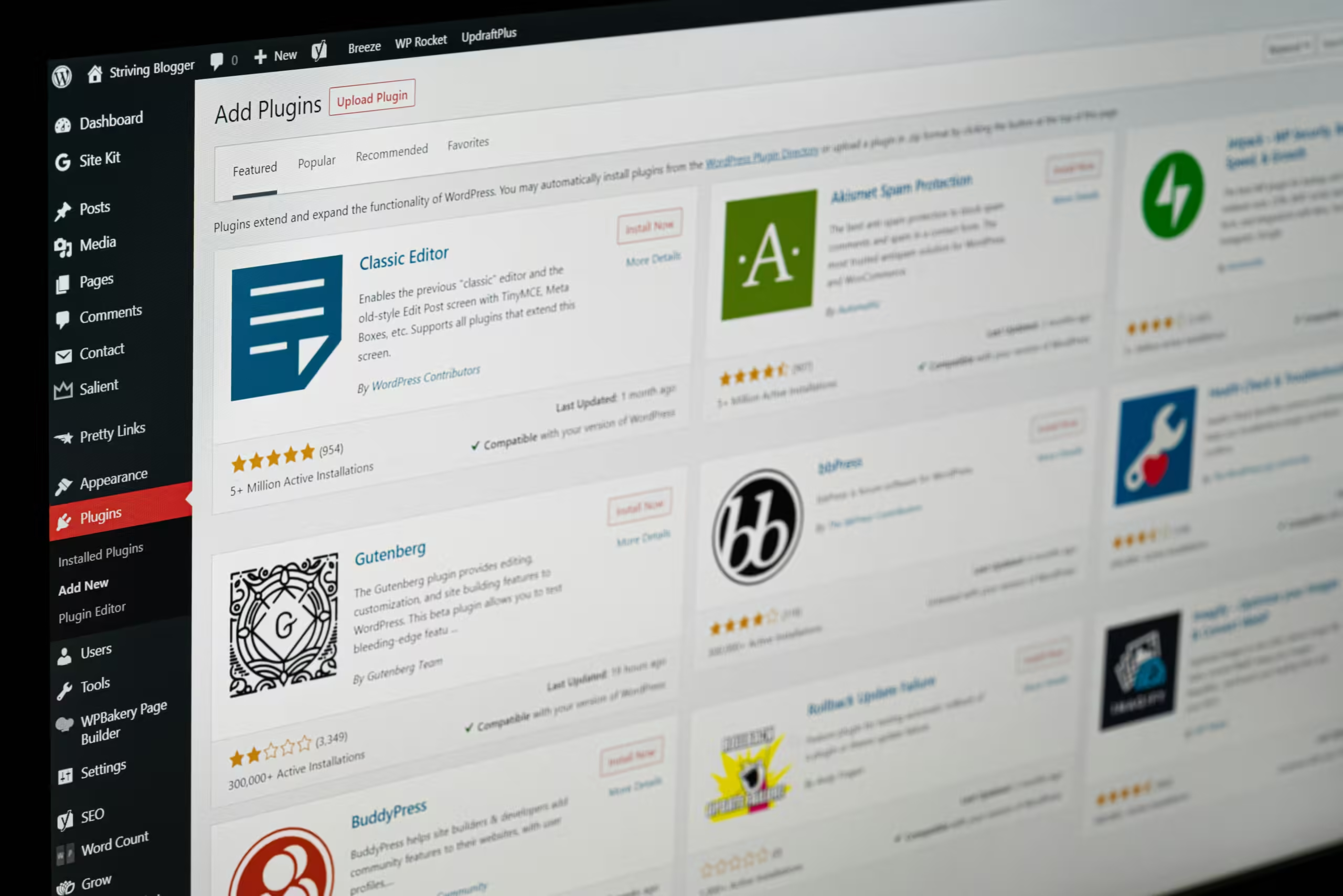What is SEO and Why is it Important?
Search Engine Optimization, commonly referred to as SEO, is a fundamental aspect of digital marketing that focuses on enhancing the visibility and ranking of websites on search engines. By utilizing various strategies and techniques, SEO aims to drive organic, or free, traffic to websites, facilitating a broader reach to potential customers. As consumers increasingly turn to search engines to find information, products, and services, effective SEO has become pivotal for businesses striving to maintain a competitive edge in the online marketplace.
However, it is essential for businesses to recognize that effective SEO requires careful planning and execution. Many organizations inadvertently make common SEO mistakes that can hinder their online performance. Such errors can result in decreased rankings, lost visibility, and wasted resources. By understanding and avoiding these common pitfalls, businesses can significantly enhance their SEO efforts and reap the benefits of improved traffic and ultimately, increased revenue. Therefore, grasping the importance of SEO and its correct implementation is crucial for achieving long-term success in the digital landscape.
Mistake #1: Neglecting Keyword Research
Keyword research serves as the cornerstone of any effective SEO strategy. It involves identifying the terms and phrases that potential visitors are likely to use when searching for information related to your content. Neglecting this crucial step can lead to missed opportunities in terms of website traffic and visibility. Many individuals and businesses commonly overlook keyword research or may opt for generic keywords that do not align with their audience’s search intent, resulting in diminished website performance.
The impact of improper keyword selection cannot be understated. When you fail to research keywords thoroughly, you may inadvertently target terms that are either too competitive or too obscure, thereby limiting your ability to attract relevant visitors. Furthermore, using the wrong keywords can mislead your audience, leading to high bounce rates as users leave your site shortly after arriving. This indicates to search engines that your content may not be valuable, ultimately harming your search rankings.
To avoid this mistake, utilizing effective tools and methods for keyword research is paramount. Various platforms like Google Keyword Planner, SEMrush, and Ahrefs can provide insights into search volume, competition, and trends. Additionally, employing long-tail keywords – specific phrases that target niche audiences – can enhance your chances of appearing in relevant search results. Incorporating these strategies not only allows for better targeting of qualified traffic but also supports a more meaningful connection with users.
In summary, neglecting keyword research can significantly impair your SEO efforts. By understanding the importance of selecting the right keywords and utilizing reliable tools, you can lay a strong foundation for enhancing your website’s visibility and traffic. This proactive approach fosters an effective SEO strategy that aligns well with user intent and search behaviors.
Mistake #2: Overlooking On-Page SEO Elements
On-page SEO refers to the optimization of individual web pages to rank higher and earn more relevant traffic in search engines. Neglecting essential on-page SEO elements can significantly hinder a website’s visibility and indexing by search engines. Key components such as title tags, meta descriptions, heading structures, and alt text for images play a crucial role in this optimization process.
Title tags are one of the first elements search engines consider and are fundamental to SEO. They summarize the content of a webpage and should accurately reflect the relevance of the page while incorporating target keywords. Poorly constructed title tags can lead to diminished search engine rankings, as they fail to inform both search engines and users about the page’s content.
Similarly, meta descriptions serve as a brief summary of the webpage’s content, appearing beneath the title in search results. An effective meta description not only includes relevant keywords but also offers an enticing call to action, encouraging users to click through to the site. Skimping on this aspect can result in reduced click-through rates, as users may overlook the page among many others.
Heading structures, including H1, H2, and H3 tags, are vital for organizing content and emphasizing key points. A well-structured heading hierarchy not only improves readability but also assists search engines in understanding the content’s context, which aids in proper indexing. Moreover, alt text for images is essential for accessibility and providing search engines with textual context about the visual content. Missing or poorly written alt text can restrict a site’s visibility in image searches and impact overall SEO performance.
Integrating correct on-page elements through optimized title tags, compelling meta descriptions, logical heading structures, and descriptive alt text can enhance both search engine rankings and user experience. As such, paying attention to these critical on-page SEO factors is imperative for any website aiming to improve its performance in search results.
Mistake #3: Ignoring Mobile Optimization
In today’s digital landscape, the significance of mobile optimization cannot be overstated. With mobile traffic surpassing that of desktop users, businesses must prioritize the mobile experience to remain competitive. Ignoring mobile optimization can lead to significant consequences, including lost traffic, higher bounce rates, and diminished user engagement. When a website is not optimized for mobile, users may struggle to navigate, leading them to abandon the site in favor of more user-friendly alternatives.
One prevalent error is creating a separate mobile version of a website instead of employing responsive design principles. Although a dedicated mobile site can function, it often leads to fragmented user experiences, inconsistent branding, and complicated maintenance. Responsive design, on the other hand, ensures that a single site adapts to various screen sizes seamlessly. This approach optimizes content for all devices, resulting in improved usability and a more streamlined experience for users.
To ensure that a website is mobile-friendly, several key practices should be adopted. First, it is crucial to test the website on multiple devices and screen sizes to identify and rectify any issues that may emerge. Using tools such as the Mobile-Friendly Test can provide valuable insights into how a site performs on mobile. Additionally, focusing on enhancing load times is essential, as mobile users are usually on-the-go and may not have the patience for slow-loading pages. Techniques such as image optimization, leveraging browser caching, and minimizing redirects can significantly reduce load times.
Furthermore, simplifying navigation plays a vital role in improving mobile usability. Employing larger buttons, accessible menus, and intuitive layouts ensures that users can interact with the website effortlessly. By prioritizing mobile optimization, businesses can enhance user experience, engage their audience effectively, and ultimately drive conversions in an increasingly mobile-centric world.
Mistake #4: Failing to Create Quality Content
One of the most significant oversights in SEO strategy is the failure to create high-quality content. The modern digital landscape requires not just a focus on keywords but also a commitment to delivering original and engaging content. Businesses that prioritize keyword stuffing over the substance often find that their efforts yield minimal results in terms of traffic and conversions. Quality content serves not only to attract users but also to keep them engaged, thereby improving dwell time and reducing bounce rates which are critical factors in search engine rankings.
A successful SEO strategy hinges on the ability to provide valuable content that resonates with the target audience. This includes understanding what users are searching for and delivering answers in a clear and compelling format. For instance, blog posts can serve as an effective medium for informative, long-form content that engages readers. Alternatively, short, engaging videos can capture the audience’s attention while delivering essential information quickly. Infographics also present a visually appealing option for those who prefer to digest data through imagery. All these formats can significantly enhance the user experience while being optimally aligned for search engines.
To create quality content, start by conducting thorough research to identify relevant topics and keywords that align with your audience’s interests. Focus on providing unique perspectives and actionable insights that differentiate your content from competitors. Additionally, ensure that your content is well-structured, easy to read, and visually appealing, which bolsters user engagement. By prioritizing quality over mere keyword presence, businesses can cultivate an authoritative online presence that not only attracts traffic but also encourages user loyalty, ultimately leading to improved search engine rankings and conversions.
Mistake #5: Neglecting Local SEO Strategies
In today’s digital landscape, many businesses tend to overlook the importance of local SEO strategies, particularly those that operate within specific geographic areas. Failing to optimize for local search can result in missed opportunities, as potential customers increasingly rely on search engines to find products and services in their vicinity. Therefore, understanding and implementing effective local SEO practices is crucial for enhancing visibility and driving customer engagement.
One of the primary steps in establishing a robust local SEO presence is to create and optimize a Google My Business (GMB) account. This platform allows businesses to display essential information such as location, hours of operation, and contact details, making it easier for local customers to find and connect with them. A well-optimized GMB profile can significantly boost a business’s local search rankings and enhance its credibility.
Additionally, securing reviews from satisfied customers plays a vital role in local SEO. Customer feedback not only influences potential clients’ decision-making but also enhances a business’s visibility in local search results. Encouraging customers to leave positive reviews on platforms like Google and Yelp can create a trustworthy image for the business while improving its search engine rankings.
Utilizing local keywords is another effective strategy to enhance local visibility. Businesses should incorporate geographic phrases and terms relevant to their services throughout their website, meta descriptions, and content. This not only aids search engines in associating the business with specific locations but also helps attract the right audience. For instance, a bakery in Austin should utilize keywords such as “Austin bakery” or “best pastries in Austin” to optimize its online presence.
In conclusion, neglecting local SEO strategies can hinder a business’s ability to connect with its community. By establishing a Google My Business profile, encouraging customer reviews, and incorporating local keywords, businesses can significantly enhance their local visibility and ultimately drive growth.
Mistake #6: Poor Site Architecture and Navigation
One often overlooked yet critical aspect of both user experience and search engine optimization (SEO) is site architecture. A well-structured website architecture facilitates easy navigation, ensuring that users can quickly access the information they seek. Conversely, poor architecture can lead to a disorganized navigation system, contributing to high bounce rates and negatively impacting both user engagement and search engine indexing.
When users encounter a complex or unintuitive navigation system, their frustration can lead them to abandon the site entirely. This is particularly prevalent in websites where content is not categorized logically, making it challenging for visitors to find what they need. As a result, it is essential to prioritize a clear and concise navigation structure that allows users to traverse the website effortlessly. This can be achieved by using descriptive menu labels that clearly indicate the content within each section, alongside a well-defined hierarchy that organizes related content logically.
Moreover, implementing internal linking is another effective strategy for enhancing site architecture. By linking related pages within the website, you not only improve user experience by facilitating easy access to additional information, but you also enhance SEO. This practice helps search engines crawl and index the site more efficiently, leading to better visibility in search results.
In summary, focusing on site architecture and navigation is vital for both improving user experience and enhancing SEO. By maintaining a logical structure, employing intuitive navigation, and utilizing internal linking, websites can reduce bounce rates and encourage visitors to explore further. As a result, a well-organized website not only caters to the needs of users but also aligns with search engine best practices, ultimately leading to improved performance in search engine rankings.
Mistake #7: Ignoring Performance Analysis in SEO
One of the most critical aspects of an effective SEO strategy is the ongoing analysis of website performance. Neglecting this essential practice can result in missed opportunities for improvement and optimization. Tools such as Google Analytics and Google Search Console are invaluable in tracking various metrics that reflect how well a website is performing in search engines. Regularly utilizing these tools can highlight both strong areas and those needing attention, ultimately allowing for a more data-driven approach to SEO.
Key performance metrics include organic traffic, bounce rate, impressions, click-through rates (CTR), and keyword rankings. Organic traffic reveals the number of visitors coming from search engines, indicating how well your content resonates with users. A high bounce rate could suggest that visitors are not finding the content relevant or engaging enough, which underscores the need to refine your keyword targeting or content quality. Impressions and CTR offer insights into how often your pages are displayed in search results and how many users are compelled to click, which is crucial for understanding user engagement.
In addition, tracking keyword rankings helps assess the effectiveness of your current strategies. If specific keywords show a downward trend, adjustments may be necessary. This could involve optimizing existing content, creating new content tailored to user intent, or improving on-page SEO elements like meta tags and headings.
Failure to analyze performance data means relying solely on initial strategies without understanding how they evolve over time. This oversight can hinder growth and limit potential. Therefore, regularly reviewing performance enables you to adjust your strategies effectively. Creating a habit of analyzing data not only supports maintaining high rankings but also fosters continuous improvement within your SEO practices. Consistent monitoring and adjustments are vital to remaining competitive in an ever-changing digital landscape.
Conclusion
Good SEO is the foundation of success for any modern digital business. The above measures help to strengthen a website’s SEO presence, but they are not sufficient to guarantee strong results. Consider reading our other guides on the basics of SEO that teach you the fundamentals of building a strong website. Our team at bearhouse also provides professional SEO services that guarantee results quickly and efficiently.
SEO is not a one-time effort but an ongoing process. Continuous education and adaptation to the latest strategies are detrimental for staying ahead of the competition. As search engine algorithms change, so too must our approaches to SEO. By remaining proactive in addressing these common pitfalls, readers can pave their path to online success, ensuring their strategies remain effective and relevant in the ever-changing digital environment.







Join the discussion One Comment